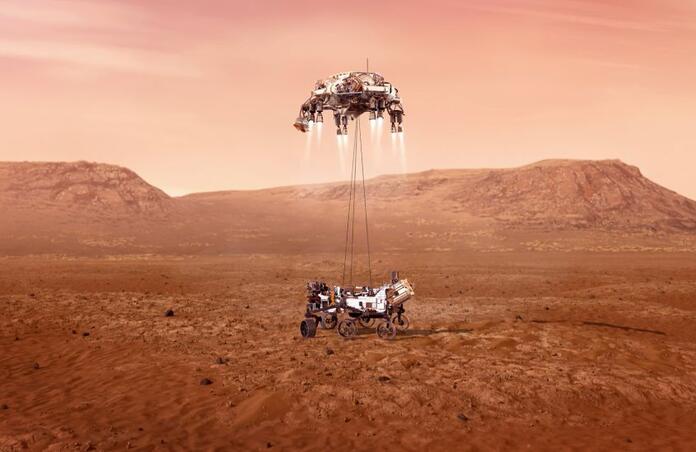Perseverance, Hope and Question to the Sky – the Mars race

On the 9th of February, a United Arab Emirates spacecraft reached Mars, followed two days later by a Chinese probe. This week, we expect NASA’s next rover to land on the Red Planet.
A Martian year is just under 687 days, which implies that a launch window for spacecrafts occurs about every 2 years and 2 months. Such a window occurred in July last year, which signified the launch of the three aforementioned Mars missions, which are now, seven months later, reaching their destination. The UAE becomes the fifth country to have reached Mars alongside the United States, Russia, China and India. As is partially the case with the Chinese mission Tianwen (“Question to the Sky”) too, Al Amal (“Hope”) is an orbiter that arrived at Mars, so a device that images the planet from space. The Emirates Mars Mission’s goal is to study the atmosphere of this planet to understand its climate and weather dynamics. One particular area of interest is why Oxygen and Hydrogen from the upper Martian atmosphere gets lost into space. To achieve this, the three instruments on board can take high-resolution images in the infrared, the optical and the ultraviolet regimes; this is useful as the light reflected from the Martian surface will get absorbed at different levels in the Martian atmosphere for different wavelengths (e.g. the infrared spectrometer will be used to study the lower atmosphere).
The Tianwen probe’s orbiter part is also equipped with instruments to study the Martian atmosphere, including particle detectors to measure the impact of solar particles in near-Mars space and magnetometers to measure the magnetic field. At the same time, it will release a rover in May/June this year, which will further the ground-based search for signs of water and the study of the Martian environment more generally, as well as conduct experiments coordinated with the orbiter. For now, the landing coordinates for the lander containing the rover are being refined as landing on Mars is a difficult process - so the orbiter is working on a high-precision map of the landing region for the next few months to find the optimal landing spot. What makes landing on Mars challenging is above all the low atmospheric pressure: a parachute can’t slow down a lander enough for a smooth landing, it has to be combined with airbags, retrorockets or a "sky-crane" (the cover image shows an impression of the landing of Perseverance). As well, the delay in communications, about 20 minutes one-way, means that corrections are impossible, and the landing has to be fully automatic – a third of all Mars landers have crashed instead.
After the Chinese success, the NASA Mars-2020 mission is awaited. It will conduct many experiments related to astrobiology, as well as help prepare potential future missions: the Mars Oxygen In-Situ Resource Utilization Experiment (MOXIE) on the Perseverance rover will produce Oxygen from the CO2-heavy atmosphere, a technology which could prove useful for manned exploration. Added to that, both the Chinese and American space agencies hope to return samples from the Red Planet for laboratory studies with future spacecrafts.
Cover image: Perseverance, NASA/JPL-Caltech
Image credits:
1- Hope, UAESA/MBRSC/LASP/EMM-EXI
2- Tianwen, CNSA
